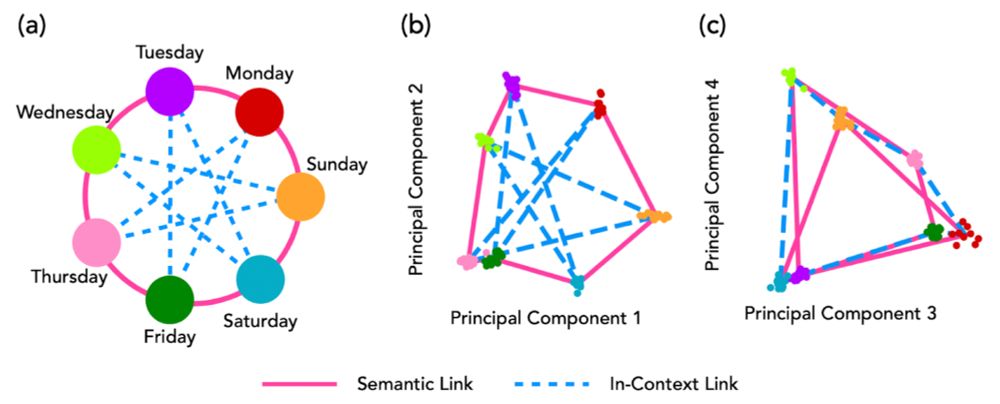Zechen Zhang and @hidenori8tanaka.bsky.social
Here is the preprint:
arxiv.org/abs/2505.01812
14/n

Zechen Zhang and @hidenori8tanaka.bsky.social
Here is the preprint:
arxiv.org/abs/2505.01812
14/n
✅ There's a clear FT-ICL gap
✅ Self-QA largely mitigates it
✅ Larger models are more data efficient learners
✅ Contextual shadowing hurts fine-tuning
Please check out the paper (see below) for even more findings!
13/n
✅ There's a clear FT-ICL gap
✅ Self-QA largely mitigates it
✅ Larger models are more data efficient learners
✅ Contextual shadowing hurts fine-tuning
Please check out the paper (see below) for even more findings!
13/n
We are working on confirming this hypothesis on real data.
12/n
We are working on confirming this hypothesis on real data.
12/n
Let's take the example of research papers. In a typical research paper, the abstract usually “spoils” the rest of the paper.
11/n
Let's take the example of research papers. In a typical research paper, the abstract usually “spoils” the rest of the paper.
11/n
What if the news appears in the context upstream of the *same* FT data?
🚨 Contextual Shadowing happens!
Prefixing the news during FT *catastrophically* reduces learning!
10/n
What if the news appears in the context upstream of the *same* FT data?
🚨 Contextual Shadowing happens!
Prefixing the news during FT *catastrophically* reduces learning!
10/n
Larger models are thus more data efficient learners!
Note that this scaling isn’t evident in loss.
9/n

Larger models are thus more data efficient learners!
Note that this scaling isn’t evident in loss.
9/n
8/n

8/n
Training on synthetic Q/A pairs really boost knowledge integration!
7/n
Training on synthetic Q/A pairs really boost knowledge integration!
7/n
6/n

6/n
We call this the FT-ICL gap.
5/n
We call this the FT-ICL gap.
5/n
To explore this, we built “New News”: 75 new hypothetical (but non-counterfactual) facts across diverse domains, paired with 375 downstream questions.
4/n

To explore this, we built “New News”: 75 new hypothetical (but non-counterfactual) facts across diverse domains, paired with 375 downstream questions.
4/n
Given:
- Mathematicians defined 'addiplication' as (x+y)*y
Models can answer:
Q: What is the addiplication of 3 and 4?
A: (3+4)*4=28
3/n
Given:
- Mathematicians defined 'addiplication' as (x+y)*y
Models can answer:
Q: What is the addiplication of 3 and 4?
A: (3+4)*4=28
3/n
2/n
2/n
Big thanks to the team: @ajyl.bsky.social, @ekdeepl.bsky.social, Yongyi Yang, Maya Okawa, Kento Nishi, @wattenberg.bsky.social, @hidenori8tanaka.bsky.social
14/n
Big thanks to the team: @ajyl.bsky.social, @ekdeepl.bsky.social, Yongyi Yang, Maya Okawa, Kento Nishi, @wattenberg.bsky.social, @hidenori8tanaka.bsky.social
14/n
We find a power law relationship between the critical context size and the graph size.
13/n

We find a power law relationship between the critical context size and the graph size.
13/n
12/n

12/n
11/n

11/n
We set up a task where the days of the week should be navigated in an unusual way: Mon -> Thu -> Sun, etc.
Here, we find that in-context representations show up in higher PC dimensions.
10/n

We set up a task where the days of the week should be navigated in an unusual way: Mon -> Thu -> Sun, etc.
Here, we find that in-context representations show up in higher PC dimensions.
10/n
9/n

9/n
Here, we used a ring graph and sampled random neighbors on the graph.
Again, we find that internal representations re-organizes to match the task structure.
8/n

Here, we used a ring graph and sampled random neighbors on the graph.
Again, we find that internal representations re-organizes to match the task structure.
8/n
elifesciences.org/articles/17086
7/n

elifesciences.org/articles/17086
7/n
6/n

6/n

